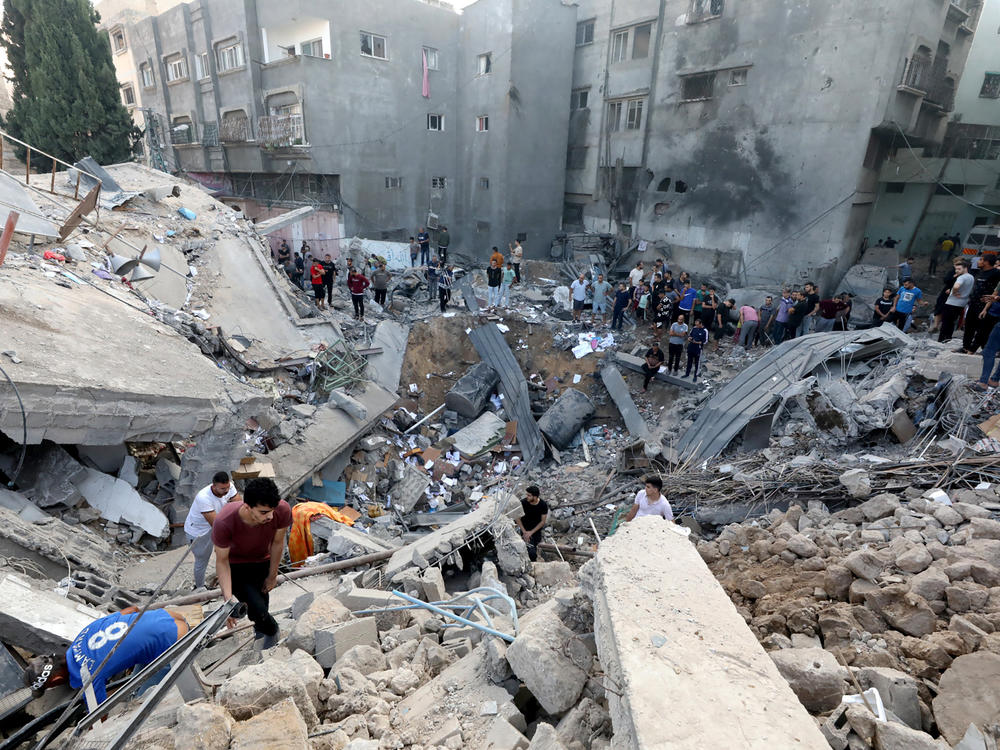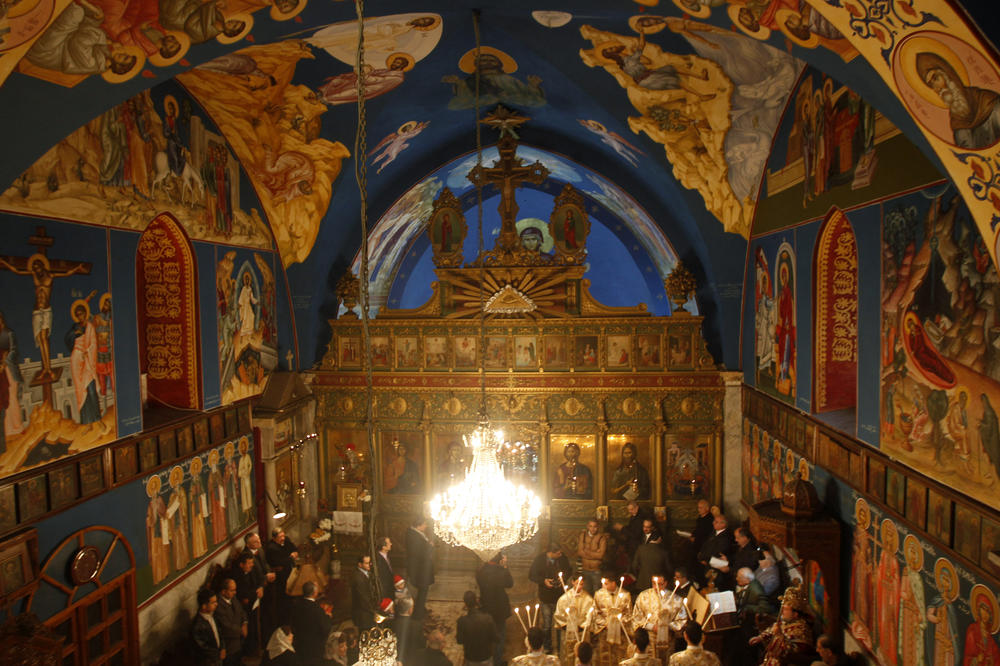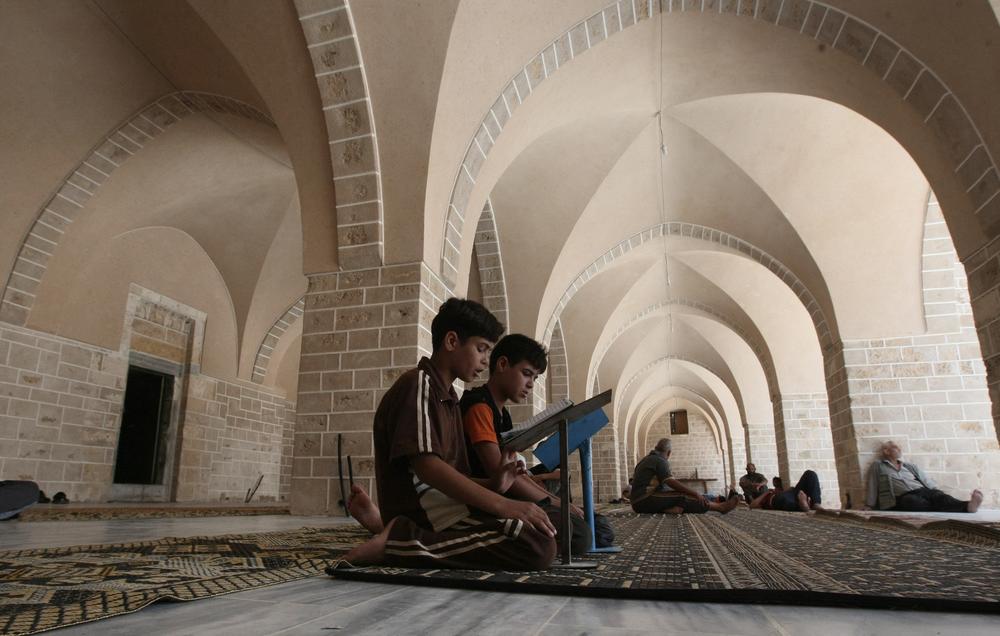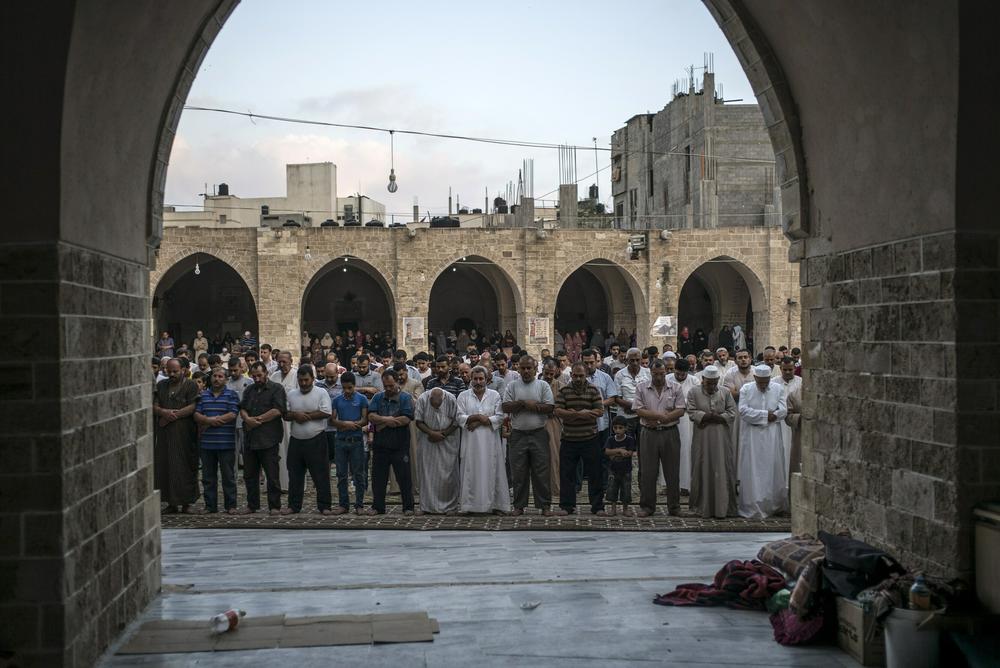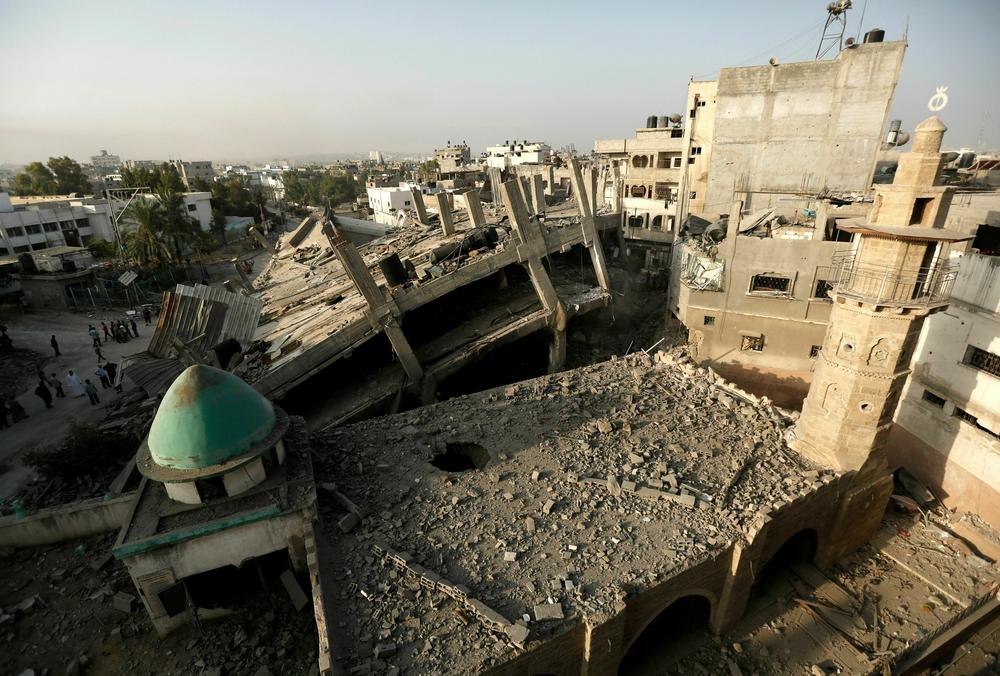Section Branding
Header Content
More than 100 Gaza heritage sites have been damaged or destroyed by Israeli attacks
Primary Content
In the weeks since Hamas' Oct. 7 attack, Israeli airstrikes on the Gaza Strip have killed more than 15,000 Palestinians, according to Gaza's health ministry, and destroyed thousands of homes in the territory.
And there have also been tremendous losses to the region's ancient and globally significant cultural heritage. The region was a hub for commerce and culture under Egyptian, Greek, Roman and Byzantine rule. It remained influential for centuries thereafter.
A recent survey by the group Heritage for Peace details the damage done so far to more than 100 of these landmarks in Gaza since the start of the present conflict.
The casualties include the Great Omari Mosque, one of the most important and ancient mosques in historical Palestine; the Church of Saint Porphyrius, thought to be the third oldest church in the entire world; a 2,000-year-old Roman cemetery in northern Gaza excavated only last year; and the Rafah Museum, a space in southern Gaza which was dedicated to teaching about the territory's long and multi-layered heritage — until it was hammered by airstrikes early on in the conflict.
Israel says it is pursuing Hamas in an effort to destroy it and to rescue hostages. It accuses Hamas of operating out of civilian areas, including hospitals and mosques.
"There were priceless items from coins, precious stones, copper plates, clothes," said Rafah Museum director Suhaila Shaheen, speaking in Arabic in a video interview posted on the museum's Facebook page amid the rubble of the destroyed space. Shards of white plaster littered the floor. The wall behind her had completely collapsed. "The Museum of Rafah is in God's care now."
In the Heritage for Peace report's introduction, the Catalonia-based nonprofit describes itself as maintaining "a neutral stance, with our programs focused on empowering heritage specialists to confront unique challenges, such as safeguarding artifacts, sites, museums, and libraries during times of armed conflict." It added the survey was generated in response "to the requests and desires of numerous concerned individuals, researchers, and local residents to shed light on the status of cultural heritage."
"If this heritage be no more in Gaza, it will be a big loss of the identity of the people in Gaza," said Isber Sabrine, president of Heritage for Peace, in an interview with NPR.
Sabrine said his organization plans to continue the work of surveying and monitoring the status of cultural landmarks in Gaza over the coming months, both on the ground in collaboration with locals, as well as using satellite imagery.
"The people in Gaza, they have the right to keep and to save this heritage, to tell the history, the importance of this land," he said.
The 1954 Hague Convention, agreed to by Palestinians and Israelis, is supposed to safeguard landmarks from the ravages of war. But landmarks in Gaza have been destroyed by Israeli strikes in earlier rounds of fighting. Dozens of sites, including the now-obliterated Great Omari Mosque, suffered damage in 2014. A report by UNESCO, the United Nations body that designates and protects World Heritage sites, cites further destruction to cultural and historic sites in Gaza in 2021.
"UNESCO is deeply concerned about the adverse impact of the ongoing fighting on cultural heritage in Palestine and Israel," said a UNESCO spokesperson in a statement sent to NPR. "Our organization calls on all parties involved to strictly adhere to international law. Cultural property should not be targeted or used for military purposes, as it is considered to be civilian infrastructure."
UNESCO has as yet been unable to survey the extent of the damage to the area's cultural heritage. "Due to the ongoing fighting and the impossibility of accessing the area, UNESCO is not in a position to assess the damage itself on site," the agency's statement said. "At this stage, our experts can only monitor the situation remotely, using satellite data and information transmitted to us by third parties. This information must then be scrupulously verified."
The Palestinian Ministry of Tourism and Antiquities did not respond to NPR's request to share information about the current status of Gaza's cultural heritage sites or salvaging plans. According to a report in The Art Newspaper, the ministry said it is "at present unable to carry out a full assessment given the conditions on the ground."
Israel's military did not immediately respond to NPR's request for comment on the Heritage for Peace report.
Locals are only now starting to take stock of the damage caused by the present fighting. "When we move around Gaza, we feel very angry and very sad as well," said Gaza City Mayor Yahya al-Sarraj in a video report by Al Jazeera. "We can discover now how much damage has been inflicted on the infrastructure of the city, on the cultural centers, on the main libraries of the city, and on the public."
Copyright 2023 NPR. To see more, visit https://www.npr.org.
